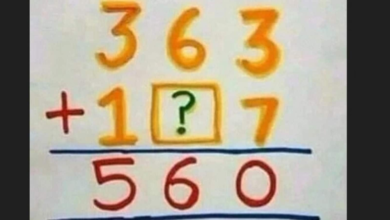Catching up with Star Trek, the quiet franchise

“Star Trek” got a head start in the television-universe game. Four series, beginning with “Star Trek: The Next Generation,” came out in succession and ran almost continuously from 1988 to 2005, well before the current iterations of the Marvel and “Star Wars” TV empires were in place.
And then — nothing. A 12-year hiatus, during which Marvel got into TV with “Agents of S.H.I.E.L.D.” and Lucasfilm established its modern TV beachhead with the animated “Clone Wars” stories.
“Star Trek” series began to reappear with “Discovery” in 2017, and there are now five continuing shows, the most the franchise has had at one time and — depending on what you count as a series, and how you define continuing — probably more than either of its main competitors. But it still feels as if “Star Trek” were trying to catch up. Outside its loyal fan base, its shows don’t draw a lot of attention. Did you know that a new season of “Star Trek: Lower Decks” premiered on Thursday? Didn’t think so.
And that’s too bad, because the post-“Discovery” shows, all streaming on Paramount+, embody some of the charms that have always made “Star Trek” a happy sci-fi indulgence. The live-action series — “Star Trek: Picard” and the newest, “Star Trek: Strange New Worlds” — promulgate the cosmic benevolence and earnest philosophizing that characterize the “Star Trek” universe without taking themselves too seriously or getting too tiresome (although “Picard,” in its recent second season, skirted the line). The animated series — “Lower Decks” and “Star Trek: Prodigy” — take franchise conventions and move them, affectionately and cleverly, outside the starship command structure where they usually reside.
And under the stewardship of the producer Alex Kurtzman, the “Trek” lineup feels less engineered, less fine tuned, than those of the competition. There’s a calculation to the Marvel and “Star Wars” portfolios — an effort to appear edgy while alienating as few fans as possible — that can make watching the latest series seem like a mandatory school assignment. The throw-it-at-the-wall diversity of the “Trek” shows (which, of course, may be just as carefully calculated) makes each series feel more approachable, if less of a designated “must see.”
“Discovery,” whose story has time-traveled 900 years past the events of the original “Star Trek” series, is the veteran of the group at four seasons and counting. But “Strange New Worlds,” whose first season ended in July and was tremendously popular with the faithful, is the real standard-bearer. It’s the apotheosis of the packaged-nostalgia business these franchises represent: bringing back a character who had become a TV footnote, “Worlds” essentially recycles the original show’s formula, shame-free.
Anson Mount plays Chropher Pike, who was captain of the Starship Enterprise in the unaired original pilot of the first “Star Trek” series and is brought back as the captain in “Worlds,” set a decade before. (Mount also played Pike as captain of the USS Discovery in Season 2 of “Discovery.”) Younger versions of iconic characters like Spock (Ethan Peck) and Uhura (Celia Rose Gooding) are on board; James T. Kirk (Paul Wesley), Pike’s eventual replacement, makes a guest appearance in a time-travel story line. There is a broad arc involving Pike’s knowledge (gleaned in a Klingon temple during an earlier season of “Discovery”) of how he may die, but “Worlds,” like the original, is strongly episodic, with the Enterprise finding trouble weekly at different planets or space stations or nebulae.
As you would expect, “Worlds” mirrors the original show’s weaknesses and strengths. The utopian ideas don’t run deep, and the dialogue expounding on them can be stiff at best, turgid at worst. The performances are serviceable, reflecting the one-dimensionality of the characters.
But the space adventure is solid, and there’s a goofball audacity that is familiar and appealing. The aliens and brigands still look like summer-stock extras, and the cannon fodder among the junior officers can still be discerned a mile off. A high point of the season was an episode in which the crew thought they were characters in a children’s fantasy book, and the cast got to ham it up even more than usual. The battle scenes still embody the foundational “Star Trek” idea that you can save the universe sitting at a desk and typing. (Sadly, Pike’s engage-the-warp-drive catchphrase, “Hit it,” is the franchise’s lamest.)
“Picard,” which fetishizes Patrick Stewart’s performance as Capt. Jean-Luc Picard in “The Next Generation” to the same degree that “Worlds” emulates the original series, started off with a noirish style and texture that set it apart. But its second season, predicated on the irritatingly omnipotent “Next Generation” antagon Q, was a regression.
Which leads to a proposition that may not sit well with old-school ‘Trek” fans but is borne out the evidence: The most adventurous and engaging work currently being done in the franchise is in the two half-hour animated series, the heart-on-its-sleeve children’s adventure “Prodigy” and the raunchy adult sitcom “Lower Decks.”
“Prodigy,” whose first season ran this past winter, is rendered in dark, tactile, fast-moving 3D animation that feels far outside the “Trek” canon. (The show was created Dan and Kevin Hageman, known for the Lego series “Ninjago” and their work on the DreamWorks series “Trollhunters.”) It adopts a definitively outsider point of view: A derelict starship is commandeered a group of nonhuman escapees from a prison colony, who are taught to pilot the ship and instilled with Starfleet values a holographic drill sergeant in the form of Captain Janeway from “Star Trek: Voyager” (voiced the original performer, Kate Mulgrew).
Hologram Janeway’s lectures are smart franchise management, constituting a crash course in “Star Trek” basics for young viewers. Older fans can enjoy them, too, and will get even more enjoyment out of episodes like the inevitable Kobayashi Maru training-exercise homage, which includes the recorded voices of the original-series cast members James Doohan, Nichelle Nichols and Leonard Nimoy.
“Lower Decks,” whose third season will continue to arrive through October — all the “Trek” shows post episodes weekly — was created Mike McMahan, who was a writer and producer on “Rick and Morty.” It is the least “Star Trek”-like but perhaps the most “Star Trek”-besotted show of the bunch.
Focused on a friend group of low-ranking crew members assigned to an obscure support vessel, “Lower Decks” practices a lighter version of the transgressive, cynical humor in “Rick and Morty.” (Or conversely, a more frenetic and suggestive version of the humor in “Futurama.”) Misadventures with dimwitted or comically rapacious aliens are secondary to careerism, resentments and elaborate practical jokes among the crew.
And at nearly every moment, reference is made to the larger “Trek” universe in the amusingly earnest manner of toons who know they’ll never get to make a crossover episode with the live-action shows. Season 3 begins with a reveal that Ensign Brad Boimler (Jack Quaid) is, like Captain Picard, a vineyard owner back on Earth. Characters from across the “Trek” universe drop , providing voice work for the original actors, like J.G. Hertzler as the Klingon warrior Martok, now emceeing a fantasy role-playing game.
It’s not surprising that “Prodigy” and “Lower Decks” offer fresh takes on the “Trek” formulas; what’s less expected is that they are, at times, more moving and emotionally complex than the live-action shows. This might have to do with their provenance in talented creators outside the “Trek” sphere. But it also feels as if the medium of animation, and the peripheral genres of kids show and comedy, provide a freedom that the makers of the live shows may not have.
Both of the animated shows have central characters who are as interesting and sharply defined as any in “Discovery,” “Picard” or “Worlds.” In both cases, they’re female off-leads or co-leads: in “Prodigy,” Rok-Tahk (Rylee Alazraqui), a massive being made of brick who is revealed to be a shy young girl, and Gwyn (Ella Purnell), the daughter of the story’s primary villain; in “Lower Decks,” Mariner (Tawny Newsome), a blindingly competitive ensign with mommy issues who is a sly analogue to hypermasculine protagons like Kirk. When these characters confront their demons, the comic machinations of “Lower Decks” and the child’s adventure of “Prodigy” may boldly go straight to your heart.







